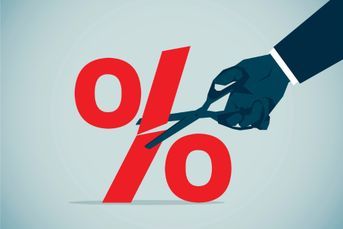Why U.S. investors are buying foreign stocks
Many Americans are making smart moves with their investment portfolios by favoring foreign stocks over domestic ones. But it's not because they've suddenly become savvy.
Many Americans are making smart moves with their investment portfolios. They just might not know it.
With U.S. stocks at records and many commentators saying they’re overpriced, American investors are diversifying into cheaper international stocks. Investors have pulled a net $6.3 billion from U.S. stock funds this year, according to Investment Company Institute (ICI) data, while putting $60.5 billion in foreign stock funds.
(Don’t miss: How investors should factor global unrest into their portfolios)
This lack of enthusiasm for high-flying hometown stocks is exactly the opposite of what you’d expect of U.S. investors. Individual investors have a well-deserved reputation for following the herd, and the S&P 500 has offered twice the return of non-U.S. stocks since early 2013. Given investors’ past behavior, it’s hard to believe they’ve all become savvy value investors overnight, with a sudden appreciation of buying low and selling high, says Leuthold Weeden Capital Management analyst Kristen Hendrickson.
Rather than crediting the mass of investors with new investment wisdom, Ms. Hendrickson sees other forces at work. The shift toward foreign stocks, she says, owes more to long-term trends as Americans age and retirement plans get more sophisticated.
A few decades ago the typical American investment portfolio was pretty simple: You had U.S. stocks and U.S. bonds. In the 1980s and 1990s, the U.S. stock market surged. By the 21st century, older investors — including the large Baby Boom generation — ended up with portfolios heavily weighted toward U.S. stocks.
(See also: The bond market is beginning to look like a textbook definition of a bubble)
The move into international stocks this year is part of a natural, gradual process of diversification in investor portfolios that’s been going on for a while, Ms. Hendrickson says. Data from ICI back her up: In 2003, domestic stock mutual funds made up 57% of assets in all equity, bond and hybrid funds. At the end of May, that was down to 41%. In the meantime, fund investors took extra helpings of foreign equity funds, which went from 10% to 15% of assets.
Some investors may be deciding for themselves to diversify abroad. Many more are being prodded by financial advisers or even their retirement plans. The proportion of U.S. 401(k) and other retirement plans offering emerging-market funds doubled from 2011 to 2013, according to benefit consultants Aon Hewitt, from 15 to 30%. Target-date funds, the default option in many 401(k) plans, are also getting much more popular and are designed to create a diverse portfolio without investors lifting a finger.
Learn more about reprints and licensing for this article.








